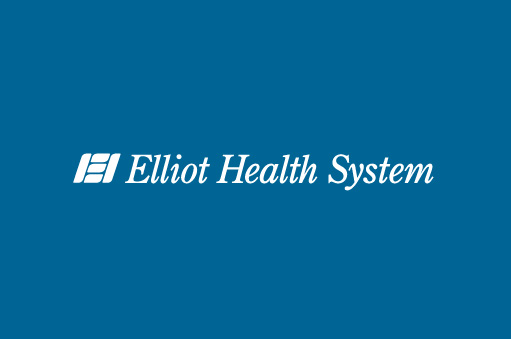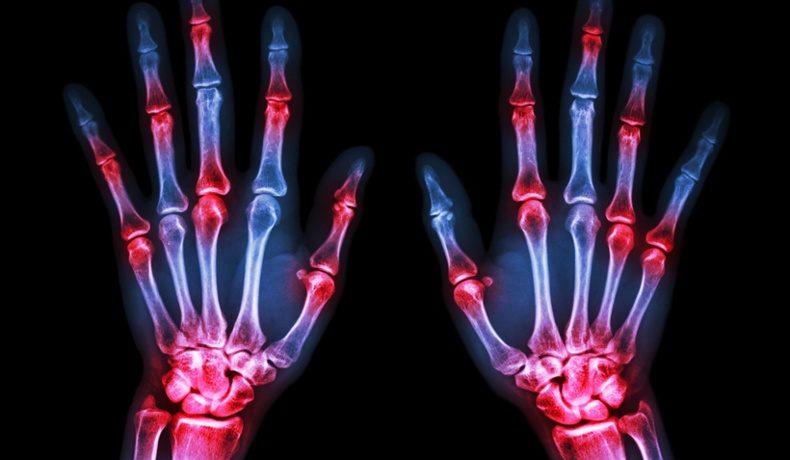Top Tier LinkedIn Groups for Healthcare Professionals

LinkedIn groups for healthcare professionals are an effective and strategic professional tool for physicians, nurse practitioners and physician assistants to utilize. LinkedIn provides a wide range of networking options and enables healthcare professionals such as yourself to connect to peers, patients, researchers, recruiters or employers.
One of the important benefits of using LinkedIn is connecting with other healthcare professionals that may be outside of your area of expertise or geographic location. Another benefit is having a social media tool for potential patients to seek you out is valuable to broaden your community. And finally, in the digital world, potential employers or recruiters frequently use LinkedIn to explore professionals such as reviewing a curriculum vitae or determining your connections with educational facilities or your research network.
Whatever your reasons are for utilizing LinkedIn groups for healthcare professionals, becoming familiar with the tools it offers is necessary. LinkedIn allows you to connect to different groups in your professional area of expertise or in areas that you would like to network with. The following are several groups that any healthcare professional would benefit with becoming connected to.
- One of the larger groups on LinkedIn to access in order to network for employment is, IHR, which is a group for healthcare or pharmaceutical professionals. This group would allow a healthcare professional to network with over 300,000 people to find new employment.
- Healthcare Executives Network, with over 200,000 members would allow you to connect with executives, managers and other healthcare professionals. This group describers their network as “sharing best practices, collaborate and build lasting relationships”. This group could certainly provide you with education, support and an ability to network with the healthcare industry.
- Healthcare Industry Professionals Group, with over 70,000 members is a group seeking to network with a wide range of healthcare professionals. This group was created in order to “discuss innovation and the technology and regulatory changes that are impacting the industry”. There are always changes in regulations, technology and health insurances so being connected to groups that regularly discuss and share experience is useful for medical professionals.
- Networking for Healthcare Professionals, with 6,700 members a smaller number comparatively speaking but boasts an effective group for medical professionals. This group describes their purpose to “exchange ideas…learn everything you need to know upon completing your residency or fellowship and beginning your career.” This group is associated with MD Preferred Services which is a resource for medical professionals to “leverage their time and resources.”
- Medical Devices Group, with over 300,000 members is a LinkedIn group of medical professionals with 41 different subgroups across a wide range of specialties and geographic locations. This group seeks to provide networking, medical content and opportunities to connect in person. A valuable and wide ranging group for healthcare professionals.
There are thousands of LinkedIn groups for healthcare professionals and millions of members on LinkedIn so whatever your medical area of expertise there is likely a group that would support your professional plans. Go ahead, starting linking up today!
—
Want to add forums to your list of physician tools? If so, make sure to check out our free resource below.
![]()
Roundup! Major Medical Advances of the 20th Century

At the turn of the 20th century, over 10% of newborn babies were not expected to survive until their first birthday. Even after that crucial first year, the average life expectancy of an American was less than 50 years. However, thanks to certain advances, the resources available to us to treat patients have sharply improved the longevity and quality of life of Americans. Now, the infant mortality rate is 60 times better than it was in 1900, and our life expectancy is upwards of 79.
The health breakthroughs and major medical advances of the 20th century were so dramatic that if we could mirror the same catalyst in other cultural arenas (such as politics and economics), many of our world’s greatest problems would be solved. Let’s examine a few of the most important major medical advances of the 20th century:
In 1895, a German professor named William Roentgen captured the first x-ray image, a photo of the bones in his wife’s hand. His realization that electromagnetic radiation could transfer through soft tissue and create images of the inside of the human body quickly swept through the medical industry. By 1913, medical x-ray machines became common place in hospitals across the world. X-ray technology has changed the medical world by providing doctors with a non-invasive way to make a diagnosis and treat a patient. We also use Roentgen’s discovery of radiation to treat of some of humankind’s most severe diseases, such as tumors, blood clots, and other blockages.
Approximately 9.3% of the population lives with diabetes. Before the development of insulin, diabetes was considered a lethal disease; the only treatment option physicians had was diet modification, which only served to prolong life by a few years. In the 1920s, a team of doctors realized that the insulin hormone, which malfunctioned in diabetic patients, could be drawn from the pancreas of animals and effectively administered to humans to control blood sugar. This development, along with responsible doctors’ insistence on an open patent that ensured no diabetic patient would be robbed of the life saving drug, has saved millions of lives over the last century and definitely earned its place on our list of major medical advances of the 20th century.
The first official vaccination actually took place long before the 20th century, in 1796, when an 8-year-old boy was inoculated against smallpox through exposure to cowpox. However, as health professionals, we can all agree that the development of vaccinations throughout the 20th century has had one of the greatest positive impacts on public health. Through the support of major medical foundations, such as the the World Health Organization, vaccinations can be thanked for globally eradicating smallpox in 1977. As vaccinations have become common practice, illnesses that were once the equivalent of a death sentence to children, such as measles, mumps, whooping cough, polio, and rubella, are now nearly non-existent.
There is no question as to why penicillin is a top candidate on our list. At the dawn of the 20th century, infectious disease was the leading cause of death, accounting for one-third of all fatalities. In 1928, Alexander Fleming accidentally contaminated a petri dish, and then noticed that the resulting mold prevented the growth of the bacteria. This “Eureka!” moment led to the development of antibiotics that has saved an estimated 20 million lives.
—
Elliot Health System would love to hear your input on this subject! What medical breakthrough in the last 100 years has been the most influential in your practice? Please send us your feedback.
![]()
EPN/EPS Network Update (6-3-16)
This network update goes over The Senior Health Annual Spring Art Show, a Thank You to Dr. Gus Emmick, and more.
Download the full Network Update PDF by clicking the button below.
Rheumatology Certification Requirements Made Easy

Rheumatology certification requirements changed in March 2016. While some of the of the certification details remained the same, there are differences that you must be aware of in order to complete this process. This article will focus on what you need to know to successfully complete your Rheumatology certification.
The subspeciality of Rheumatology has particular requirements of a physician. You must already be certified in internal medicine, have completed the necessary fellowship training as part of your medical education, hold a license to practice medicine and have passed the Rheumatology Certification Examination. Additionally, you need to demonstrate clinical competence across several areas including the development of knowledge, advanced skills and behaviors as well as consistently providing competent care to patients. Specialized training must have occurred in an accredited program for a total of 24 months of training. According to the ABIM, the Rheumatology procedure involves, “Diagnostic aspiration of and analysis by light and polarized light microscopy of synovial fluid from diarthrodial joints, bursae and tenosynovial structures; and therapeutic injection of diarthrodial joints, bursae, tenosynovial structures and entheses.”
Now that you have determined the Rheumatology certification requirements, it is now necessary to prepare to sit for the examination. This exam will test your ability to use clinical judgement, diagnostic evaluation and evaluate your knowledge across different areas. As a certified Rheumatologist, you must be able to identify and treat both common and rare medical disorders. There is a very specific blueprint that is utilized for this exam with topics across of multitude of areas. These areas include the following:
- Basic and Clinical Sciences
- Crystal-Induced Arthropathies
- Infections and Related Arthritides
- Metabolic Bone Disease
- Osteoarthritis and Related Disorders
- Rheumatoid Arthritis
- Seronegative Spondyloarthropathies
- Other Rheumatic and Connective Tissue Disorders (ORCT)
- Lupus Erythematosus
- Nonarticular and Regional Musculoskeletal Disorders
- Nonrheumatic Systemic Disorders
- Vasculitides
- Miscellaneous Topics
Possible additional areas could include Geriatrics, Pediatrics, and Pharmacology
The exam is multiple choice with one best answer required focusing on mostly patient scenarios. The examiners are also focusing on the tasks that a physician must complete including diagnosis, interpreting test results, forming recommendations, applying information from epidemiologic research and understanding the pathophysiology of the medical concerns. Once you have completed all the rheumatology certification requirements you are able to prepare to take the test. In order to sit for the exam, an on-line application must be completed with the fees paid. Once this is finished, information will be provided through a letter to schedule the test at a Pearson VUE center. The exam allows up to 10 hours of testing time divided into 4 sessions and breaks (up to 100 minutes) are allowed after each 2 hour session.
Results of your exam take time to receive. However, the longest you will have to wait is 3 months to learn if you have passed. It is always important to be prepared for any examination and it is likely that your studying and preparation for the examination never ended. Keep up the good work! You are capable of achieving this goal with appropriate preparation and practice just be sure to follow all the suggested rheumatology certification requirements.
According to the ABIM in 2015 94% of those who took the exam passed!
—
Did you just pass your Rheumatology exam? Make sure to check out the career possibilities Elliot Health System has to offer.
![]()








Recent Comments